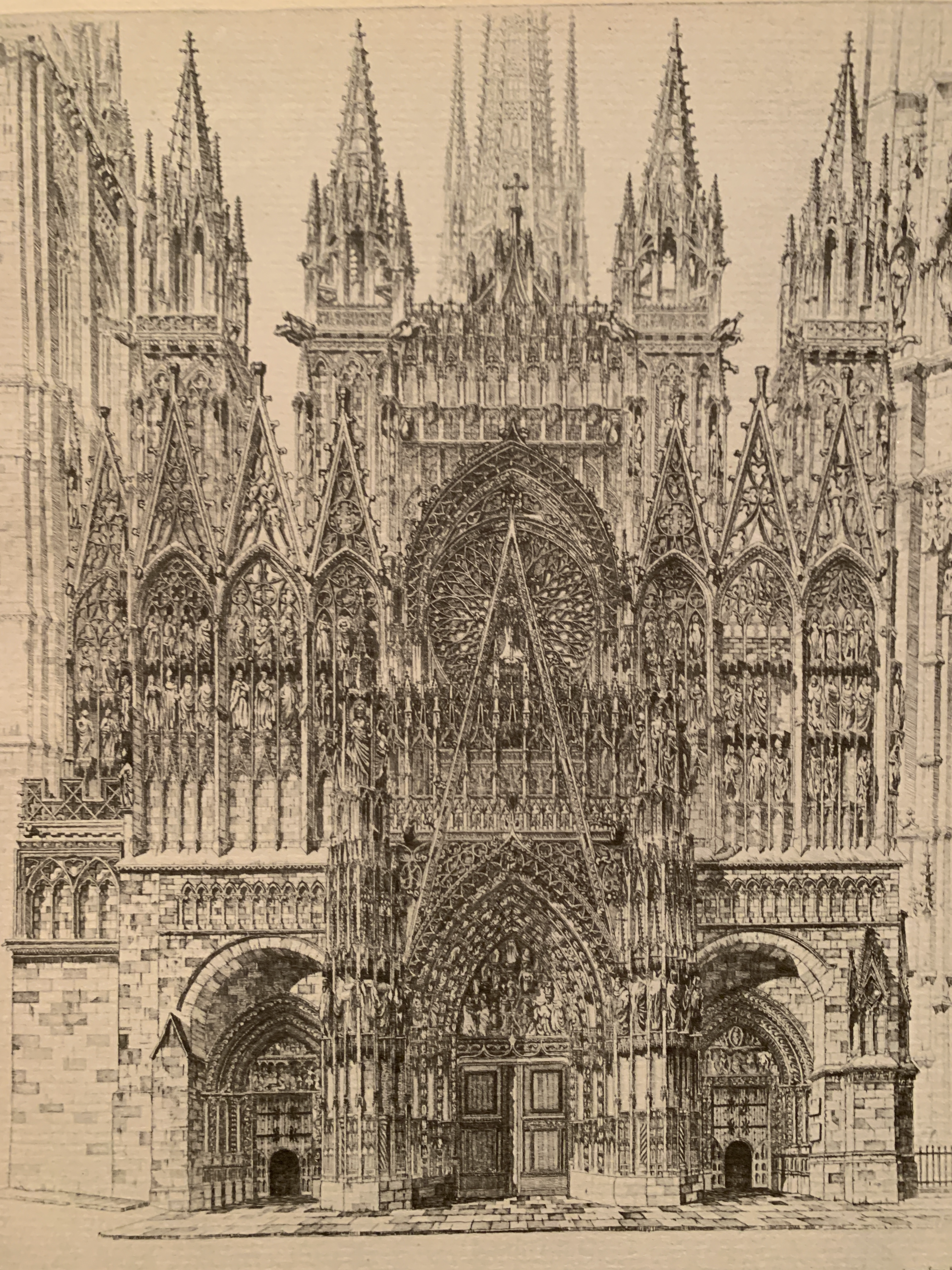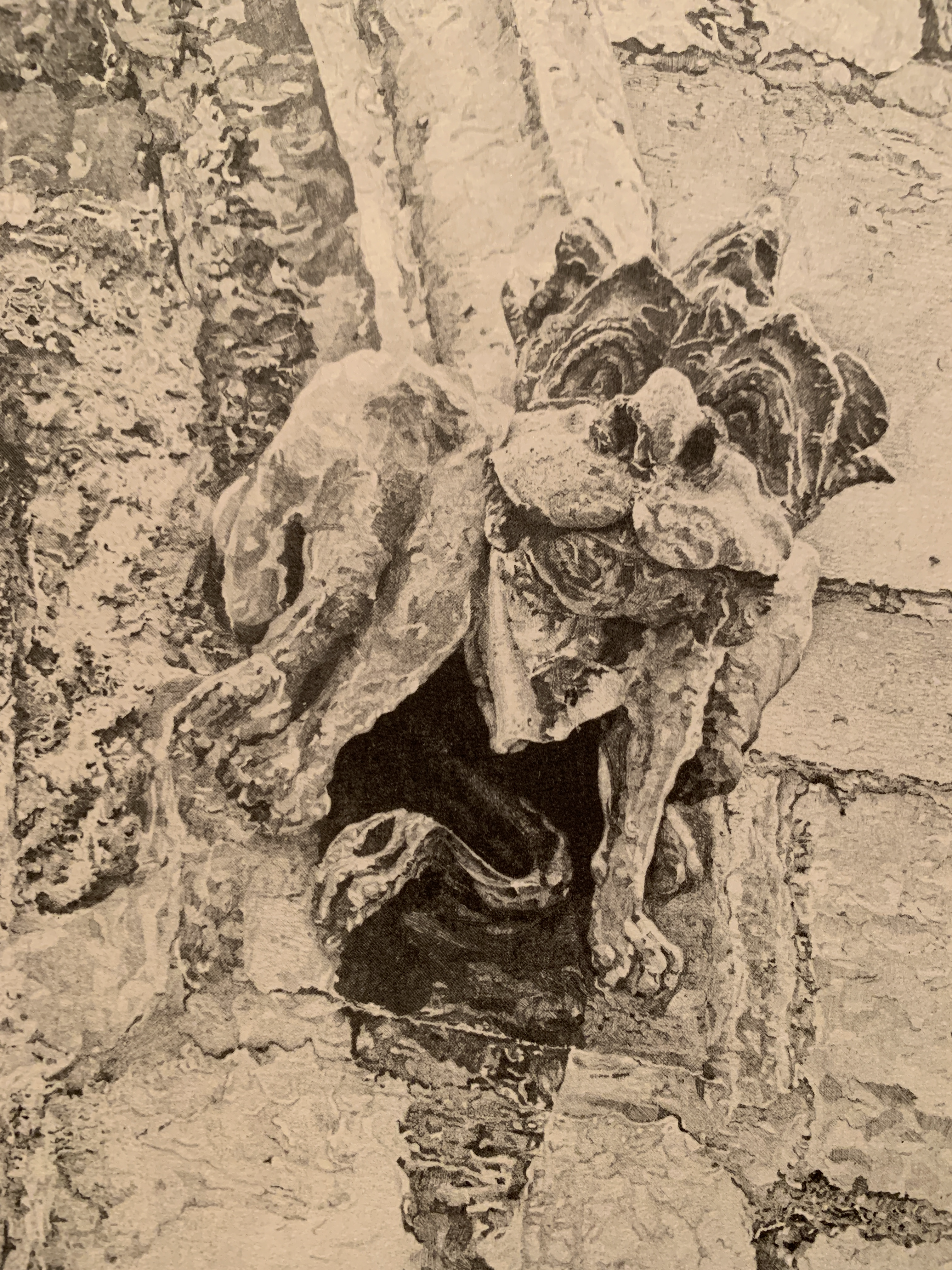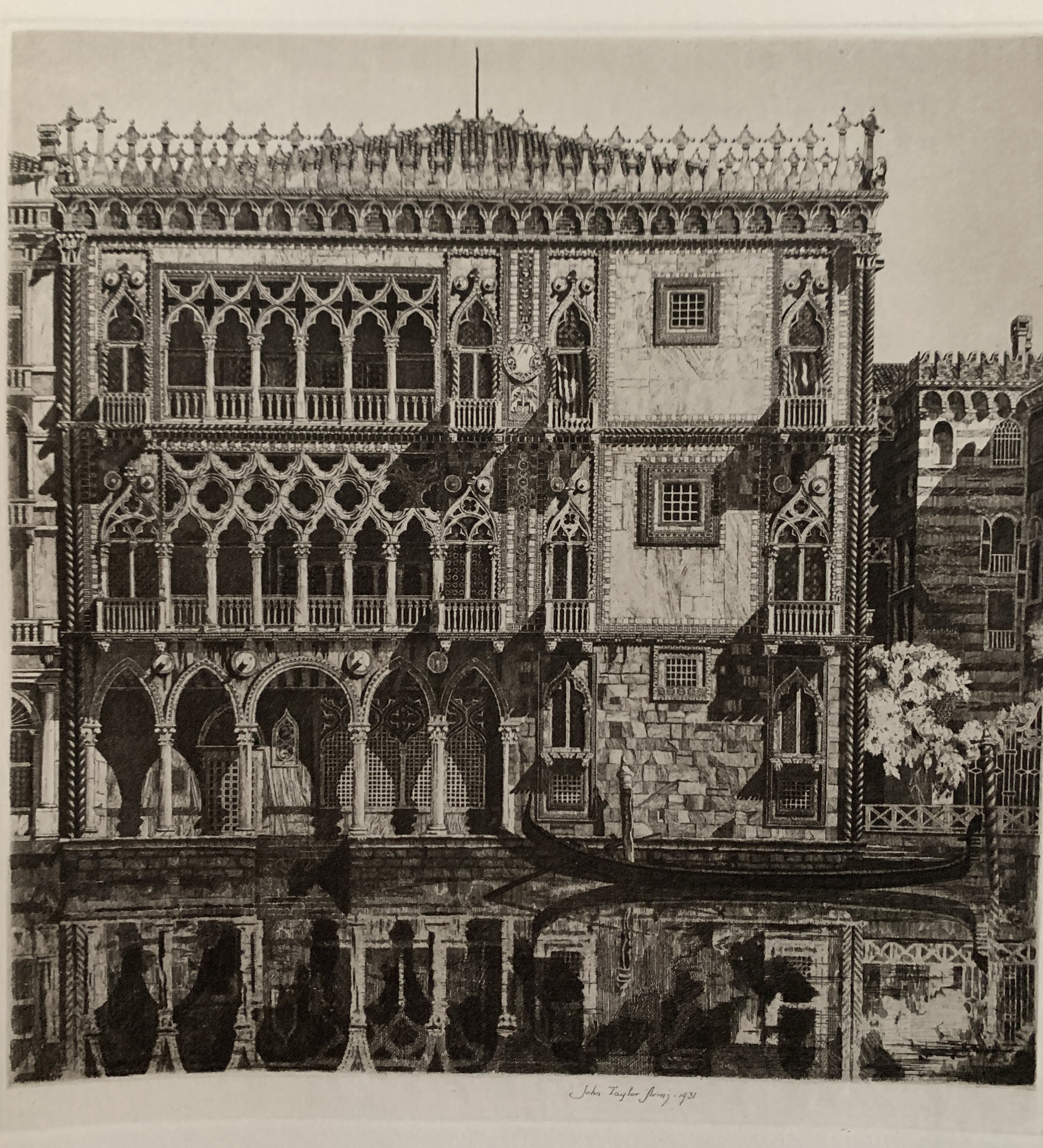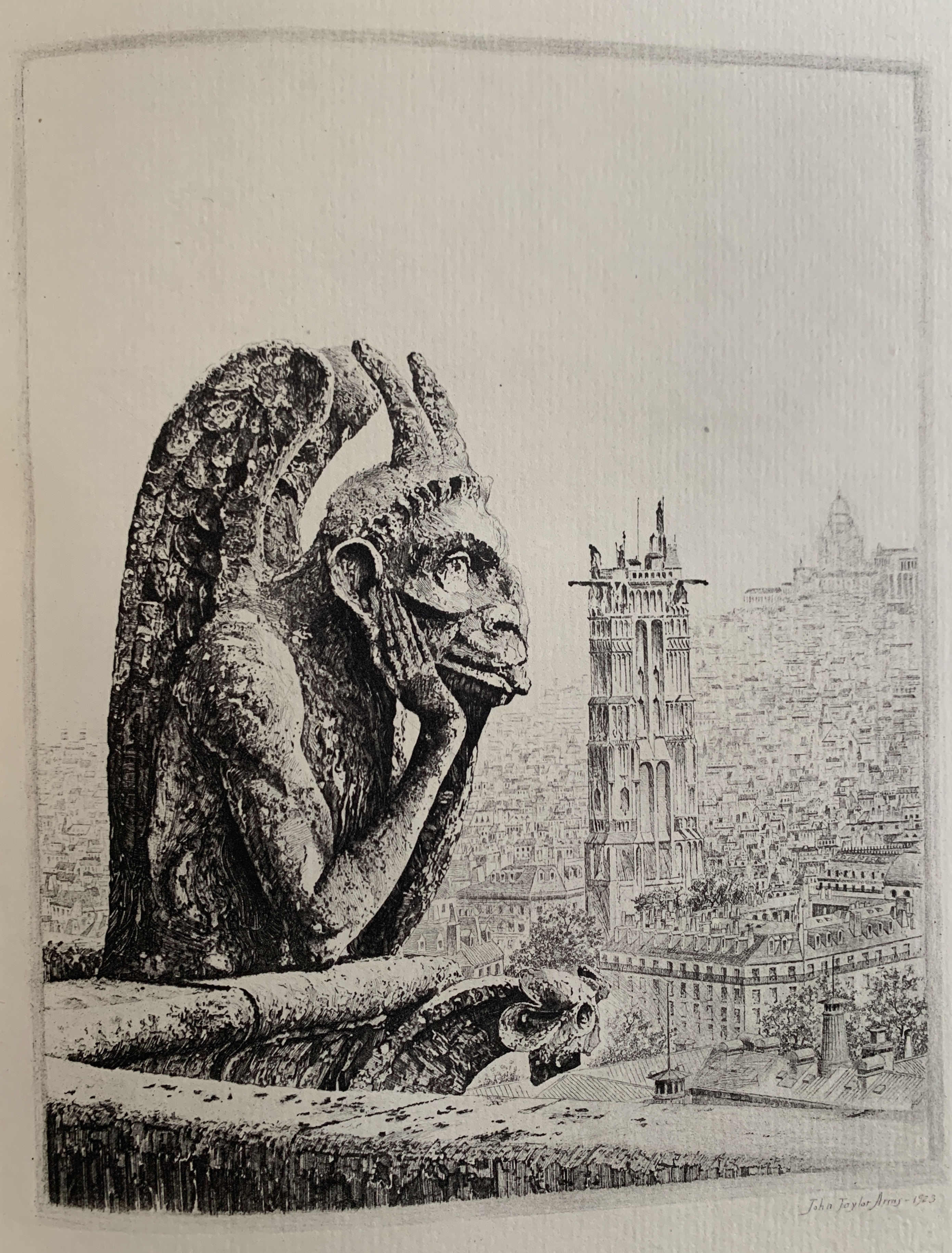APRIL featured artist |
ab
Lace in Stone, Rouen Cathedral, 1927 abc
imVenetian Filagree, 1931
abLe Penseur de Notre Dame, 1923 | Lace in Stone: The Artistry of Etcher John Taylor Arms by Paige R. Curtis The oft used romantic cliché of the mid-20th century, “Do you want to come and see my etchings?” earned a giggle in my childhood home. My father, Lewis Roberts, said this to my mother when they were dating. Despite my grandmother’s skepticism, he really did want to show my mom his etchings: the large collection he inherited from his grandfather, John Taylor Arms (JTA). I have lived my life surrounded by his art. It draws the viewer in and begs for closer examination. From soaring Gothic cathedrals, eerily realistic gargoyles and intricate stone bridges to detailed scenes of Italianate monuments, the breadth of subjects JTA etched in his five-decade career is impressive. In 1915, with the publication of his first etching, John Taylor Arms began a career in printmaking that, arguably, earned him a name as America’s most recognized etcher, lecturer and enthusiastic promoter of printmaking in the 20th century. During his career, JTA created more than 450 etchings and aquatints, wrote multiple books and articles, traveled extensively, promoted etching and printmaking through demonstrations and lectures and mentored young etchers. JTA believed that art has two principal aspects, the technical and the spiritual. An artist must master the vocabulary of his art before he can hope to adequately express his ideas. Regarding the spiritual and the technical, JTA wrotes “One is an abstract, intangible thing which we may feel but not necessarily understand, the other is something which is there for all men to see…It is when the attributes come together, when the great artist and great technician are one, that we have the great result.” (John Taylor Arms, American Etchers, Vol. V (New York: The Crafton Collection, Inc., 1930), p. 2.) Well-known for his series of High Gothic cathedrals in France and Italy, Arms’ prints communicate a mystical beauty of religious otherworldliness embodied in the medieval churches. His sophisticated, meticulous style recreates the monuments of weathered stone with remarkable lightness and organic grace, imbued with feeling many would regard as unachievable for an artist who considered himself a conservative realist, one for whom art was a tool for the moral and spiritual improvement of mankind. He wrote, “To me the Gothic represents the most spiritual and significant expression of his aspirations that man has yet created…Convinced that I could not possibly create anything more beautiful than what I saw, I have tried to recreate it in my prints, that those who saw them might see it too--with me.” (John Taylor Arms, Self-Estimate, Exhibition catalogue (New York: Grand Central Art Galleries 1937), p. 10.) America’s ”Golden Era” in etching lasted from about 1915 to 1935. Some of the finest art produced in this country was created by printmakers John Taylor Arms, Childe Hassam, John Sloan and George Bellows. Although etching fell out of popularity in the mid 20th century, JTA’s works still call to the viewer. The etchings, from impressive Gothic cathedrals to soaring flying buttresses to the almost microscopic pits of stone on a gargoyle wing, draw you in. They beckon, “Come and see!” |
About the Author: Paige Curtis is the great granddaughter of John Taylor Arms. She graduated magna cum laude from Princeton University with a degree in Art History. In addition to writing her thesis on John Taylor Arms, Paige researched, designed and presented The Gothic Image: An Exhibition of Prints by John Taylor Arms, which was shown in the Milberg Gallery of the Princeton University Library in 1988. After graduation, Paige worked for The Cooper Hewitt Smithsonian Design Museum before her marriage to Patrick took her down a teaching career path. |



 The Gothic Spirit, 1922
The Gothic Spirit, 1922
